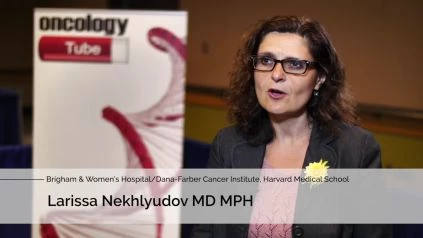Larissa Nekhlyudov MD MPH Of Brigham & Womens Hospital/Dana-Farber Cancer Institute, Harvard Medical School Discusses Need To Optimize Communication & Care Coordination: Sexual Health Is Important & Doctors Need To Ask Questions About It, Electronic Health Records Have Potential To Improve Communication.
BACKROUND:
CancerLinQ Discovery (CLQD) is a real-world dataset (RWD) derived from electronic health records across the US. This analysis builds on the prior observation of cautioned use of bevacizumab (Bev) among older adults using Medicare claims data. The goals of this study are to estimate the prevalence and incidence of hypertension (HT) and blood pressure (BP) patterns among patients (pts) with breast cancer (BC) or lung cancer (LC) treated with Bev.
METHODS:
The cohort consists of all BC and LC pts in the platform at the time of CLQD dataset creation. At least one administration of Bev was required for inclusion as was diagnosis date and date of first Bev use. Elevated BP was defined as > 140 mmHg for systolic and > 90 mmHg for diastolic BP; elevated and max BP within 90 days of first Bev and 120 after were calculated for each pt. Summary statistics and proportions were calculated within these subgroups: baseline HT, race, age, and ECOG performance status (PS)
RESULTS:
Overall, 1941 pts with BC and 4590 pts with LC treated from 2005 to 2017 were included. Baseline characteristics included % female (99 BC, 48 LC); % white (71 BC, 81 LC); % age > 65 years (34 BC, 52 LC). PS was available for N = 2118; most pts were PS 0-1 (88% BC, 82% LC). At baseline, more than half of pts were hypertensive (57% BC, 52% LC). An increase of at least 10mmHg in systolic BP within 120 days of treatment occurred in over half of pts with a normal baseline BP (54% BC, 56% LC) and in one-third of those with baseline HT (34% BC, 32% LC.) A significant proportion experienced at least a 20mmHg increase in systolic BP among those normotensive (29% BC, 32% LC) or hypertensive at baseline (16% BC, 16% LC). A majority of pts > 65 years had at least one elevated BP prior to Bev treatment (81% BC, 72% LC) although there were no clinically significant differences in rates of post treatment HT by age, race or PS.
CONCLUSIONS:
RWD provides important insights regarding the use and safety of medications outside the clinical trial population. Bev administration among pts with baseline (or pre-existent) HT is common in these practices. BP elevation post Bev exposure is also common, particularly among those with normal BP at baseline.

